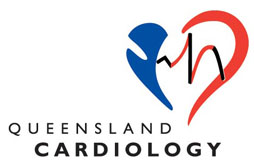Transcutaneous Aortic Valve Implantation (TAVI)
What is a Transcutaneous Aortic Valve Implantation?

Two types of valve are being implanted:
• Medtronic Corevalve
• Edwards Valve
Dr Darren Walters and Dr Con Aroney pioneered these procedures in Queensland.
This procedure can now be performed at the Holy Spirit Northside Hospital in patients who are considered at high risk for open surgical aortic valve replacement, e.g. Octogenarian’s and/or patients with lung disease or previous heart surgery.
What type of Aortic Valve Disease is Treated?
The usual aortic valve disease treated is called aortic stenosis – where the valve is severely obstructed by progressive calcification. When the obstruction becomes severe, patients develop shortness of breath, chest pain on exertion (angina) or blackouts. In some cases, a previously surgically implanted valve which has degenerated can be treated with TAVI.
Only selected patients are suitable for TAVI. Patients with severe arterial blockages, severe heart failure and coronary disease or other severe illnesses may not be suitable. The size of these implantable valves is currently limited, and patients with very large or small aortic roots will not be suitable.
How is it done?
The Corevalve may be implanted from the artery in the leg, or where that artery is too diseased, from the artery in the shoulder.
The Edwards valve may be implanted from the artery in the leg, or where that artery is too diseased, from an incision through the left chest and into a hole in the beating heart. This is performed in association with a cardiac surgeon.
A sausage-shaped balloon is initially used to open the diseased valve, whilst the heart rhythm is accelerated with a temporary pacemaker. After this the new valve is implanted under X Ray and sometimes echocardiography imaging.
This causes immediate relief of the obstruction of blood flowing through the heart. Following this the heart tubes are all removed.
Herewith are links to videos describing Corevalve Implantation.
http://www.mercyangiography.co.nz/ProcedureVideos/CoreValveProsthesis.aspx
http://www.mercyangiography.co.nz/ProcedureVideos/CoreValve.aspx
Benefits
The relief of the obstruction of blood flow leads to complete or partial relief of the symptoms of shortness of breath, chest pain or blackouts, which is usually apparent immediately.
Risks
You will be staying in hospital for about 3-4 days following the procedure, so bring your toiletries and personal items for this period.
- No food or drink 6 hours prior to the procedure.
- Please notify the doctor if you have any allergies.
- Please bring a list of all your current medications.
After the Procedure
- You may have some bruising and soreness around the access site.
- Do not lift objects over 5kg for 3-4 days after your procedure.
- Notify your doctor or present at the emergency department if you have any significant bleeding, pain, fevers, shortness of breath, blackouts or palpitations.
- Notify your doctor if you have any significant chest pain or angina.
- Do not drive for 5 days after discharge.
Follow-Up
Follow-up consultation, including further echocardiography will be made with your cardiologist.
- You will remain on aspirin and clopidogrel for at least 6 months after the procedure.
- You will require antibiotics for dental extractions or similar procedures, after implantation.
If you have any further questions, please contact us at:
Queensland Cardiology
St Vincent’s Private Hospital Northside
North Medical Suites, Green Lifts Level 3,
627 Rode Road
Chermside Q 4032
(07) 3861 5522

